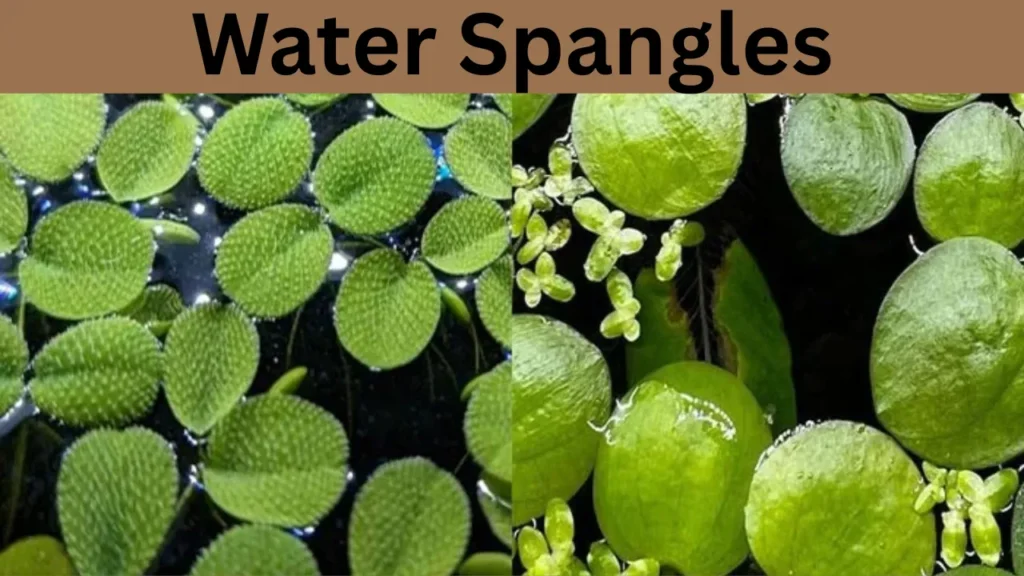Water spangles, known scientifically as Salvinia minima, are small, floating aquatic plants that belong to the fern family. These delicate plants float on the surface of still or slow-moving waters like ponds, lakes, and aquariums. Their lush green appearance and ease of growth have made them a favorite in water gardening. However, they are not just decorative. This spangles can also play a major role in ecosystem balance when managed well.
In this article, you’ll learn everything you need to know about this spangles, from their natural habitat to how they are used in aquariums and how they impact the environment.
Read more: cenpok.com
What Are Water Spangles?
Water spangles are free-floating plants with no roots in the soil. They are native to the warm and tropical regions of the Americas, especially in Central and South America. They have two oval-shaped floating leaves at each node and a third leaf that hangs below the water, mimicking roots. These hanging leaves help in absorbing nutrients from the water.
The floating leaves are usually 1 to 2 centimeters long. Their surface is velvety, due to small hairs that trap air and keep the plant afloat. This feature helps the plant survive in water environments where constant buoyancy is essential.
Read more: Doctorhub360.com Neurological Diseases: Symptoms, Treatment
Where Can You Find Water Spangles?
Water spangles naturally grow in tropical and subtropical climates. They thrive in quiet waters where there is little wave action. You will often find them in:
- Shallow ponds
- Lakes
- Marshes
- Slow-moving rivers
Due to their popularity in aquariums, they are now found in many parts of the world, including the southern United States, India, and Southeast Asia.
Read more: Water Softener Rental: A Practical Solution for Better Water Quality
Spangles in Aquariums and Ponds
Many aquarium hobbyists and pond owners love water spangles for several reasons. First, they grow fast and cover the surface of the water with a green carpet. This coverage helps in reducing algae growth because it limits the sunlight that reaches the bottom. Second, they provide shade for fish and shrimp, which helps reduce stress in aquatic life.
| Benefit | Description |
|---|---|
| Algae Control | Blocks sunlight, preventing excess algae growth. |
| Water Purification | Absorbs nutrients like nitrates and ammonia. |
| Fish Shelter | Offers shade and protection for fish and shrimp. |
| Easy Maintenance | Does not require soil or special fertilizers. |
Many pond owners also use this spangles to add a natural look. They are low-maintenance and can be easily controlled by removing excess growth.
Read more: Water Key: Understanding Its Purpose, Uses, and Variants
Growth and Reproduction
Water spangles reproduce through fragmentation. This means a single piece of the plant can break off and grow into a new plant. This process allows the plant to spread rapidly, especially in warm and nutrient-rich water.
Under the right conditions, they can double in size in just a few days. This fast growth rate makes them useful in aquariums but potentially dangerous in natural waterways where they are not native.
Read more: Water Dinosaurs: Ancient Rulers of the Prehistoric Oceans
Environmental Impact of Spangles
While water spangles are helpful in controlled environments like ponds or tanks, they can be harmful in natural ecosystems. Because they grow so quickly, they can cover entire water surfaces and block sunlight from reaching underwater plants.
When submerged plants die from lack of sunlight, the oxygen levels in the water drop. This condition, known as eutrophication, can cause fish and other aquatic life to suffer or die. Also, their thick mats can block boats and clog water pumps in canals or reservoirs.
Negative impacts when water spangles grow uncontrolled:
| Issue | Description |
|---|---|
| Reduced Oxygen | Thick growth lowers oxygen levels, affecting fish health. |
| Light Blockage | Prevents sunlight from reaching submerged aquatic plants. |
| Water Flow Obstruction | Can clog irrigation channels and block water movement. |
| Invasive Spread | Displaces native aquatic species by dominating the water surface. |
Because of these issues, some regions list this spangles as an invasive species and restrict their use in open waters.
How to Control Water Spangles Growth
In small water bodies, manual removal is often enough to control this spangles. Since they float freely, they can be scooped out using nets. In larger areas, biological controls like introducing weevils that feed on the plant can help reduce its spread.
Herbicides may also be used but should only be considered as a last resort due to the risks of polluting water and harming other species. It is always better to manage their growth through natural methods.
To avoid problems, never release aquarium water containing this spangles into rivers or lakes.
Are Water Spangles Legal in All Countries?
In some regions, especially where they are considered invasive, this spangles are restricted. For example, in parts of the United States, water spangles are under control lists to prevent them from damaging local ecosystems.
Before adding them to your aquarium or pond, check with your local environmental or agriculture agency to see if they are allowed.
Water Spangles vs. Other Floating Plants
There are many floating plants used in aquariums, such as duckweed and water lettuce.
| Feature | Water Spangles | Duckweed | Water Lettuce |
|---|---|---|---|
| Size | Small (1–2 cm leaves) | Tiny (less than 1 cm) | Large (up to 10 cm) |
| Growth Rate | Very fast | Extremely fast | Moderate |
| Maintenance | Easy | Requires constant removal | Needs space and trimming |
| Shade Provided | Good | Low | High |
| Suitable for Tanks | Yes | Yes | Large tanks only |
Water spangles strike a good balance between beauty and usefulness, especially in medium to large aquariums.
Tips for Growing Water Spangles at Home
If you plan to grow water spangles in your aquarium or garden pond, follow these tips:
- Lighting: Provide moderate to high light. Avoid very strong lights as they can burn the leaves.
- Water Movement: Keep water still or gently moving. Strong currents can damage the floating leaves.
- Nutrients: They absorb nutrients from the water, so no soil or fertilizers are required unless growth is slow.
- Trimming: Remove excess growth weekly to prevent overpopulation and oxygen issues.
Water spangles do not require much care, but keeping their population under control ensures a healthy water environment.
Scientific Classification
Understanding the biological classification of water spangles helps identify its traits and relation to other aquatic plants. It belongs to the fern family and has no flowers or seeds.
| Classification Level | Name |
|---|---|
| Kingdom | Plantae |
| Division | Pteridophyta |
| Class | Polypodiopsida |
| Order | Salviniales |
| Family | Salviniaceae |
| Genus | Salvinia |
| Species | Salvinia minima |
Water spangles differ from flowering plants like lilies. Since they are ferns, they reproduce with spores, though rarely seen. Most growth happens by splitting or breaking apart and forming new plants.
Role of Water Spangles in the Ecosystem
In their native environments, water spangles help support a balanced ecosystem. They provide shade and shelter to small aquatic animals like tadpoles, shrimp, and young fish. They also absorb excess nutrients, such as nitrates and phosphates, that could harm water quality.
In ponds and wetlands, they can slow down evaporation by covering the surface, keeping water cool. Their presence also reduces mosquito breeding by limiting surface space where mosquitoes can lay eggs.
However, outside their natural range, these benefits can become harmful if left unchecked. When these spangles spread too much, they reduce biodiversity by pushing out native species.
Conclusion
Water spangles are fascinating aquatic plants that serve multiple purposes. They purify water, provide shade, and create a peaceful aquatic scene. In home aquariums, they are one of the best floating plants you can use. However, in natural environments, they must be managed carefully to avoid ecological damage.
If you’re a pond owner or aquarium enthusiast looking for an attractive and practical floating plant, this spangles are an excellent choice—just make sure you control their spread. Always research your local laws and never release them into the wild.



